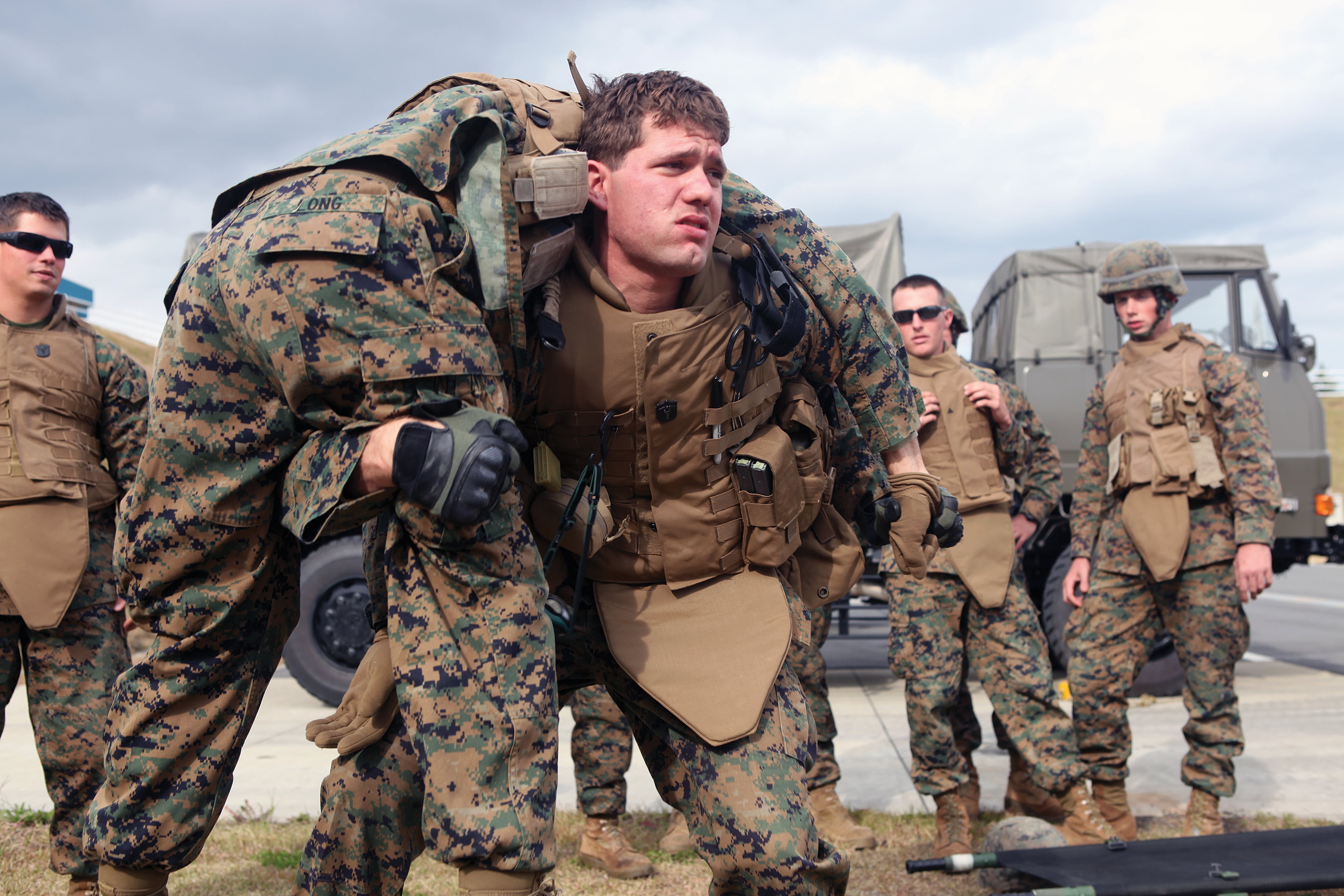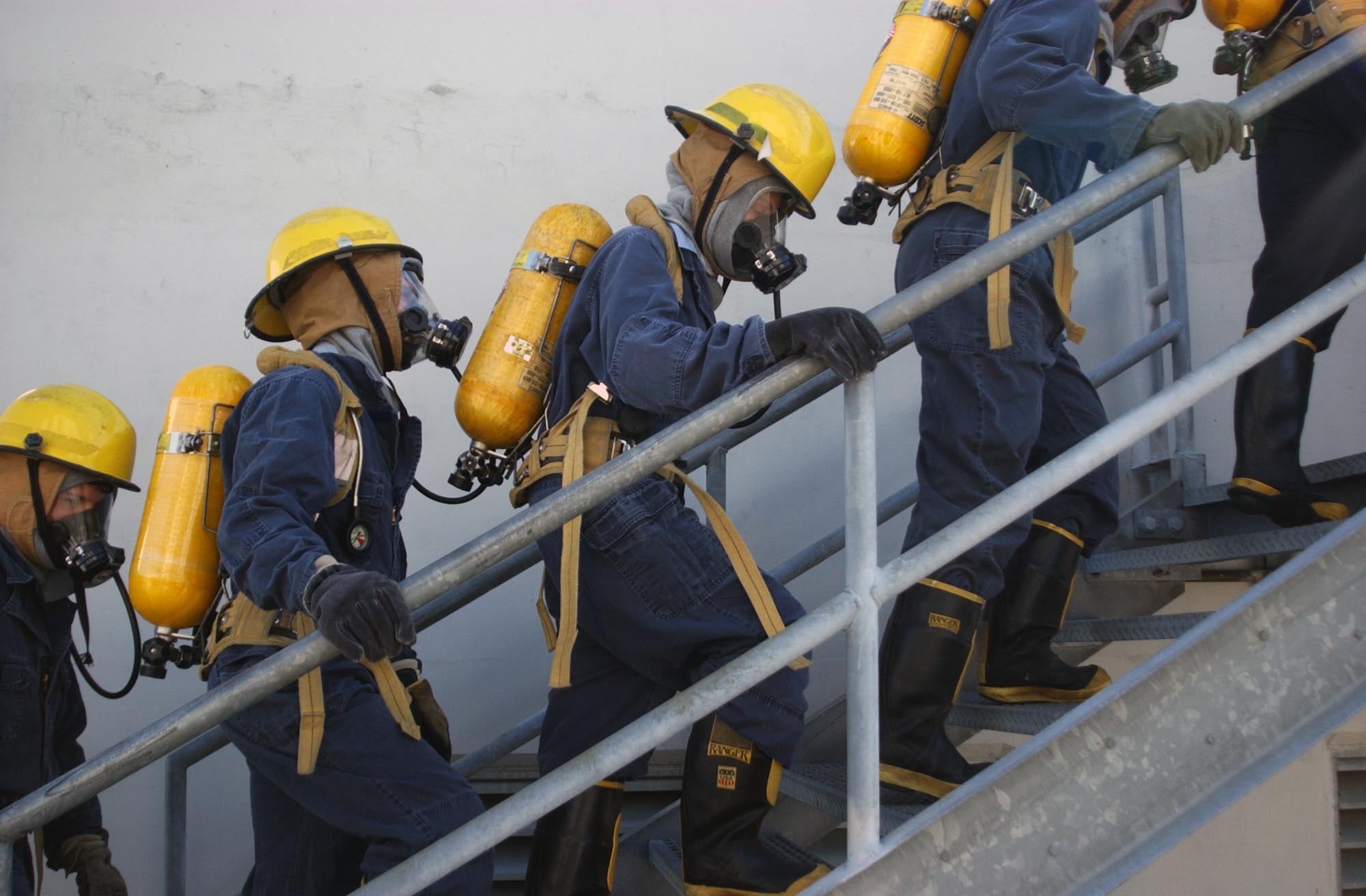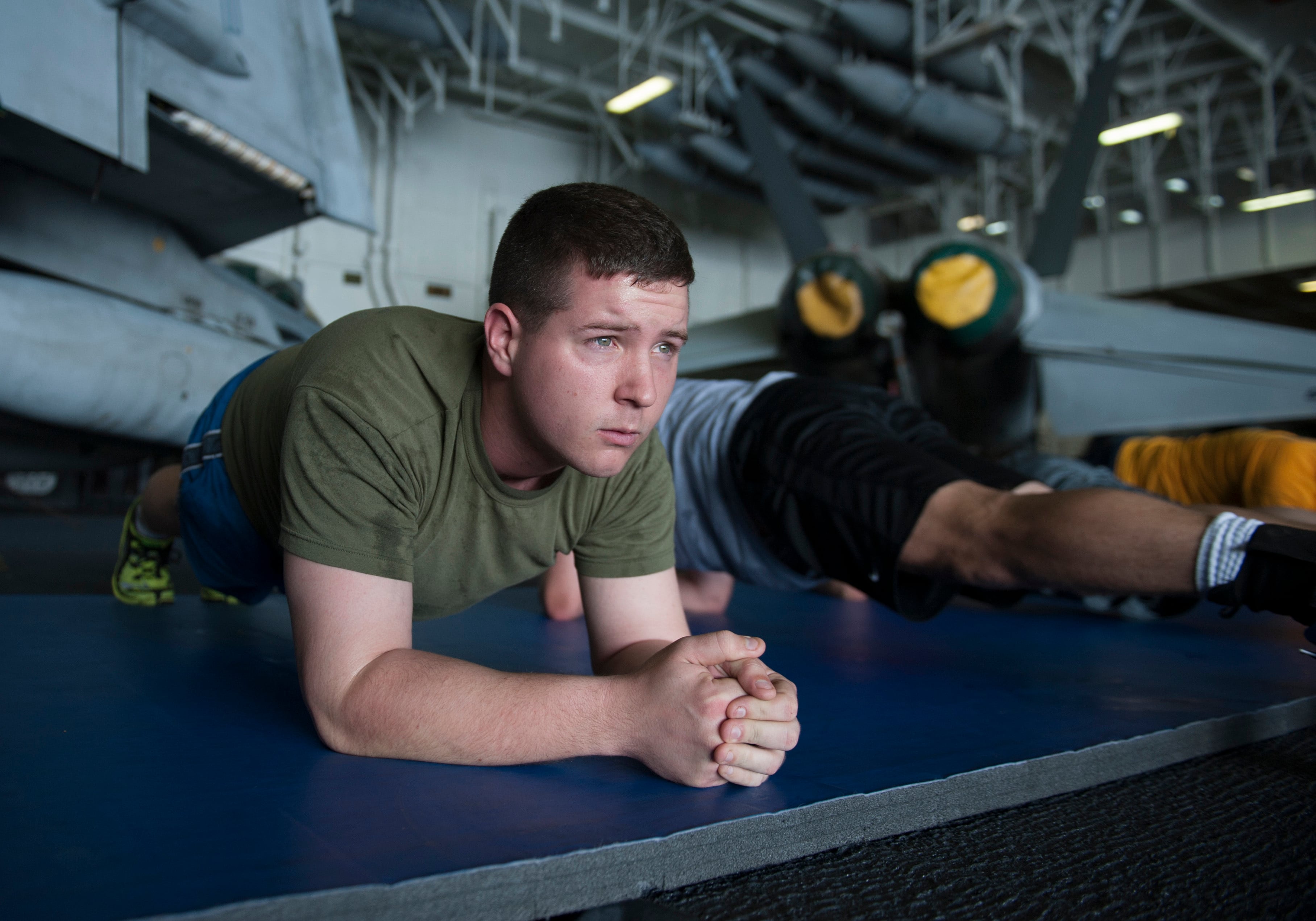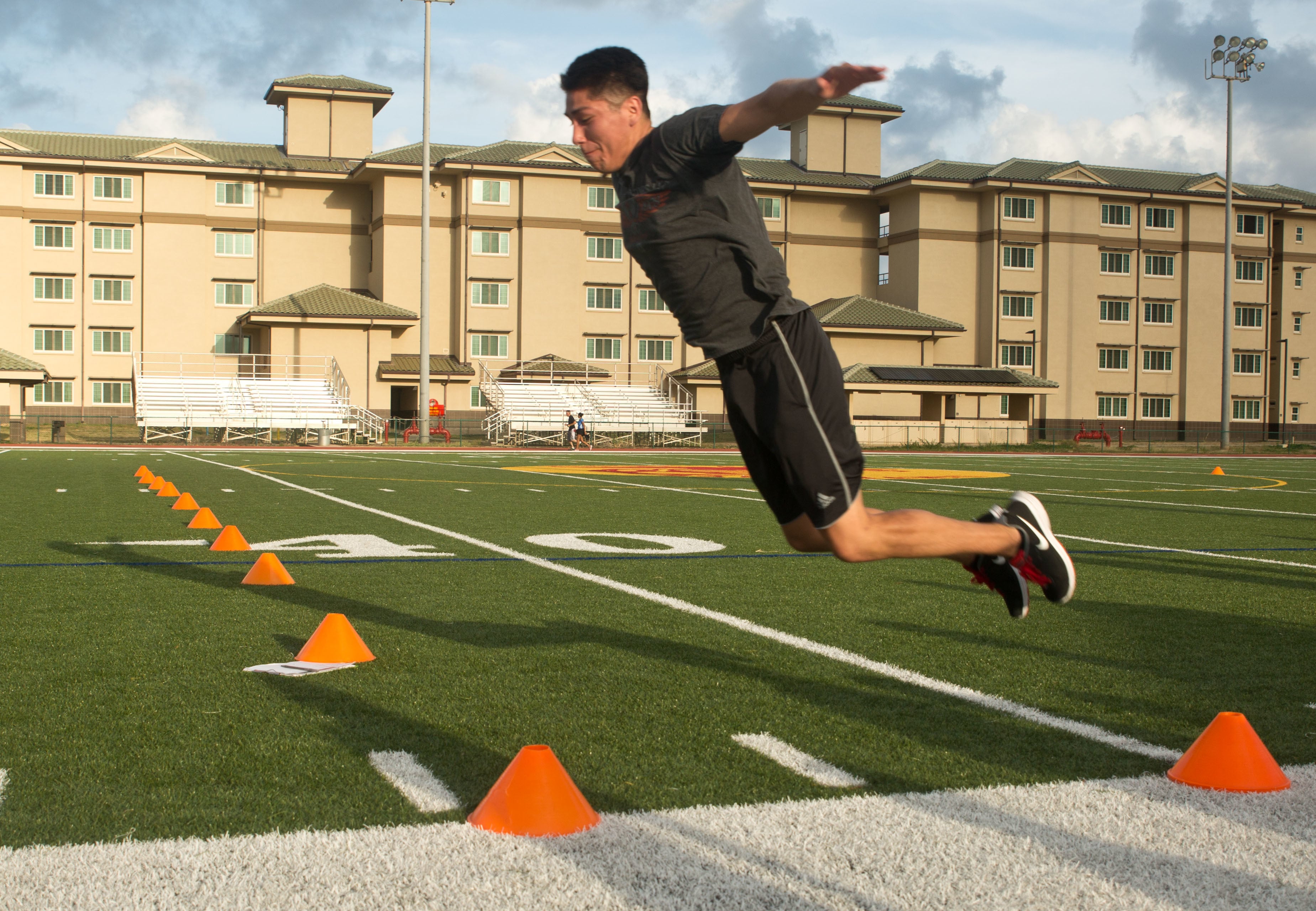The best fitness test should measure a sailor's ability to perform his or her job, from navigating a shipboard environment in heavy firefighting gear to carrying a lame shipmate out of a danger zone.
That's the thinking of the Navy's top enlisted, who's raising the possibility of a tough new fitness test that could replace or augment the existing physical readiness test.
The Navy is in the very early stages of brainstorming possibilities for a new physical readiness test, and Master Chief Petty Officer of the Navy (AW/NAC) Mike Stevens has some ideas for what that might look like.
Firefighting is one of the most high-pressure and physically taxing skills sailors must master, so with that in mind, Master Chief Petty Officer of the Navy (AW/NAC) Mike Stevens laid out some events similar to a fire department's fitness test.
"A lot of people say every sailor in the Navy is a firefighter, because you can find yourself on board a ship regardless of your source rating, right?" he said.told Navy Times in a Jan. 14 interview. "When you are on that ship, if a fire broke out, for example, everybody would have to be able to fight it. Maybe your test revolves around something like that."
Discussions are in the very early stages and Stevens was speaking hypothetically, he said, about an operational fitness test.
The Marine Corps has required a combat fitness test for years, and the Army is looking at new occupational physical tests for some specialty fields. has developed and then scrapped the idea. Meanwhile, the Navy has stuck with its general fitness test for but the Navy has stuck with the two-event-plus-run formula for decades.
And there's a reason for that, officials say: Sit-ups, pushups and running are easy to administer, with little space and no equipment required. And Navy officials say these exercises assessmeasure whole body fitness — especially the 1.5-mile run that measures cardiovascular health. But the PRT has never been a hit with sailors.
Now Stevens is putting forward a radical new direction.
However, as Stevens pointed out in an all-hands call last year, while those exercises measure general health, they don't have much to do with the job.
"You have got to find something that is kind of connected to every sailor in the Navy," Stevenshe said in a January interview. of how he wants to revamp the potentially revamping the PRT.
but these are only thoughts. These are not things that the Navy is doing. I would say maybe the Navy not even considering doing it.
Like the Marine Corps, he said, this test would work well as a once-a-year supplement to the existing physical readiness.
"Say you do a regular fitness test much like we do today during the first six months of the year," he said. "Then maybe you have a test that better allows us to understand if we are capable of performing our duties."
Chief of Naval Operations Adm. John Richardson says the concept is worth studying. also tossed around that idea.
"Something for consideration would be, maybe one of those is a pure fitness test like we have right now, and one of them might be more of a shipboard-skill type of a test," Richardson said at after a Feb.ruary 24 all-hands call in Norfolk. "Where those things you might have to do in a shipboard casualty — are restricted to those, and how might we evaluate that?"
MCPON's push for a radical new direction in Navy fitness also comes atop calls from some fitness experts for the service to adopt new job-related tasks.
Here's What their new test would look like:
Firemen's carry
While Marine Corps-style ammo lifts and maneuver-under-fire don't directly translate to the vast majority of sailors, serving on ships and in squadrons, shipboard fires are one of the biggest and most physically-taxing threats sailors face.
"Maybe they need to do something similar to that, because I am sure we all want to make and we all want to better understand if a sailor can do their job or not, right?" Stevens said.
Firefighters do a regularly physical fitness test that offers some examples for the Navy.
"Maybe...an example is something like okay you do this physical readiness test and six months later, you have to drag something heavy for a certain distance," Stevens suggested. "Maybe you have to carry a shipmate out of a compartment that is on fire." Maybe you climb a ladder with a certain amount of weight on you, drag some kind of an object that would simulate a fire hose."

Helping a shipmate. MCPON Mike Stevens says the Navy should test sailors on their ability to carry shipmates. Here, Hospital Corpsman 3rd Class Dustin P. McCann shows Marines the proper technique for a fireman's carry.
Photo Credit: Lance Cpl. Erik Brooks/Marine Corps
How it works. A kneeling sailor swings a shipmate's arm around the back of their head and then stands up using their leg muscles, while holding the carried person's arm and leg tight. Can be performed with combat gear to heighten difficulty and realism-world TK. This carry was developed by firemen to carry unconscious and wounded personnel out of hazardous areas.
Fire hose drag
Stopping a fire takes more skills than just carrying out the wounded.
That's why MCPON suggests a task to measure each sailor's firefighting ability.

Do you have what it takes to fight a fire? A Navy occupational fitness test could assess a sailor's ability to move and control a heavy firehose. It could be done with a charged firehose or with a similar weight. Here, sailors practiced firefighting training in Seattle, Washington.
Photo Credit: MC2 Douglas G. Morrison/Navy
This test would be to "drag some kind of an object that would simulate a fire hose," MCPON said.
That could be everything from an heavy object that awkward to carry to a charged firehose itself, which would present some feasibility challenges to command fitness leaders who set up the test.
How it works. The fire hose drag would set up a sailor with heavy load to carry a set distance, like 50 yards, and could be performed while wearing firefighting gear to increase the intensity level.
Ladder climb
Time to step it upget upstairs.
The Marines' combat fitness test features a 300-yard shuttle run that includes events Marines are likely to see on the battlefield, from dragging wounded squadmates to throwing grenades. Think of the ladder climb as the Navy's equivalent.

Step it up. Another test could require sailors loaded with gear -- or a weighted vest -- to climb many sets of stairs or to speed through a ship-like obstacle course.
Photo Credit: JOSN Matthew D. Leistikow/Navy
How it works. A sailor loaded down helmet to boot in a firefighting suit would be tasked with rapidly navigating a ship-like environment, opening hatches and squirming through scuttles while racing to meet a fast time climbing through passageways and a few sets of stairs. The training value could be upped by simulating fire or flooding in some areas that demand they show other skills. MCPON suggested that the sailor could carry a heavy load — such as a weighted vest — in lieu of a firefighting suit.
Meet 'the plank'

Be a plankowner. The plank tests overall fitness by holding a straight position steady, with many experts saying it is a better test of your abdominal muscles than situps. Here, Lance Cpl. Parker Greenlee, holds a plank on the aircraft carrier Harry S. Truman.
Photo Credit: MCSN Shane A. Jackson/DoD
Experts, including some who have consulted the Navy, don't have many kind words for the existing PRT.
The 1.5-mile run is the gold-standard for cardiovascular health, they say, but the Navy could do a lot better measuring strength and muscular endurance.
i
"The Navy obviously would like to have some type of strength for muscular endurance assessment as well, and I think the plank is much more operationally relevant than the push-ups and curl-ups," Peterson said, referring to the exercise's engagement of every major muscle group.
In other words, no more situps.
How it works.
Standing long jump

Jump for it. The standing long jump assess your muscular strength and is easy to administer. Here, a sailor with Marine Aviation Logistics Squadron 24 performs a long jump in 2015.
Photo Credit: Cpl. Khalil Ross/Marine Corps
How far can you jump — without running?
That's one of the preferred tests of occupational fitness test advocates. The standing long jump measurestests your muscular fitness and is easy to test. This power to jump is the sort of effort needed in combat and was one of the exercises recommended by Peterson.
How it works. Sailor springs from a crouch, swinging their legs forward to maximize their forward momentum. Their leapjob is measured from launch to landing point.
Both of These exercises could be taught to sailors in boot camp and officer training, he added, to familiarize them before they begin taking fitness tests.To add another endurance event, Peterson suggested the kneeling powerball toss, which would require launching a weighted ball from the chest. This assesses your upper body strength.
Staff writer Lance M. Bacon contributed to this report.
Meghann Myers is the Pentagon bureau chief at Military Times. She covers operations, policy, personnel, leadership and other issues affecting service members.




